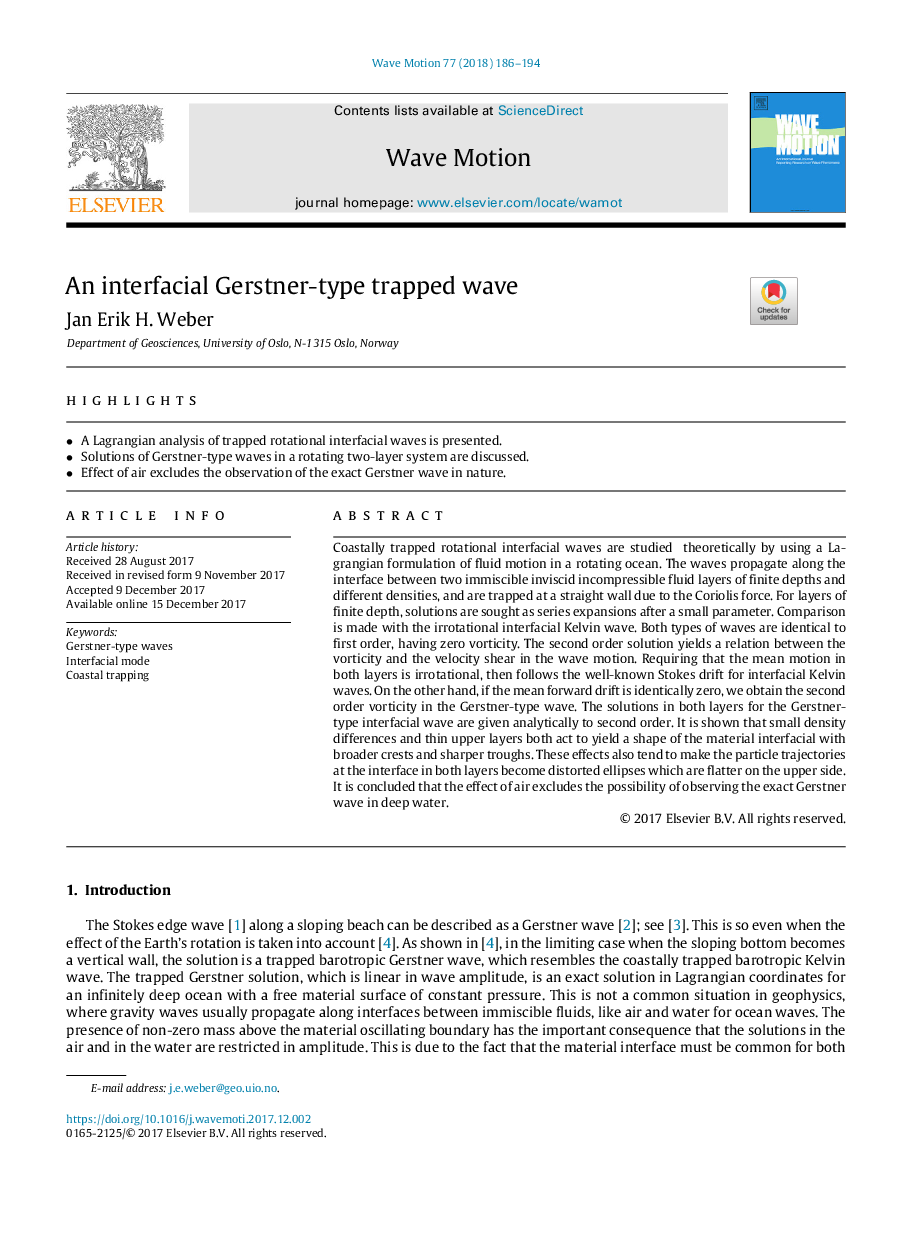| Article ID | Journal | Published Year | Pages | File Type |
|---|---|---|---|---|
| 8256811 | Wave Motion | 2018 | 9 Pages |
Abstract
Coastally trapped rotational interfacial waves are studied theoretically by using a Lagrangian formulation of fluid motion in a rotating ocean. The waves propagate along the interface between two immiscible inviscid incompressible fluid layers of finite depths and different densities, and are trapped at a straight wall due to the Coriolis force. For layers of finite depth, solutions are sought as series expansions after a small parameter. Comparison is made with the irrotational interfacial Kelvin wave. Both types of waves are identical to first order, having zero vorticity. The second order solution yields a relation between the vorticity and the velocity shear in the wave motion. Requiring that the mean motion in both layers is irrotational, then follows the well-known Stokes drift for interfacial Kelvin waves. On the other hand, if the mean forward drift is identically zero, we obtain the second order vorticity in the Gerstner-type wave. The solutions in both layers for the Gerstner-type interfacial wave are given analytically to second order. It is shown that small density differences and thin upper layers both act to yield a shape of the material interfacial with broader crests and sharper troughs. These effects also tend to make the particle trajectories at the interface in both layers become distorted ellipses which are flatter on the upper side. It is concluded that the effect of air excludes the possibility of observing the exact Gerstner wave in deep water.
Related Topics
Physical Sciences and Engineering
Earth and Planetary Sciences
Geology
Authors
Jan Erik H. Weber,
